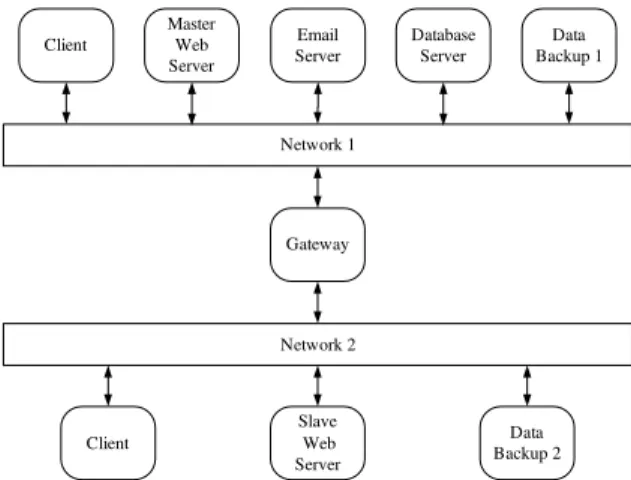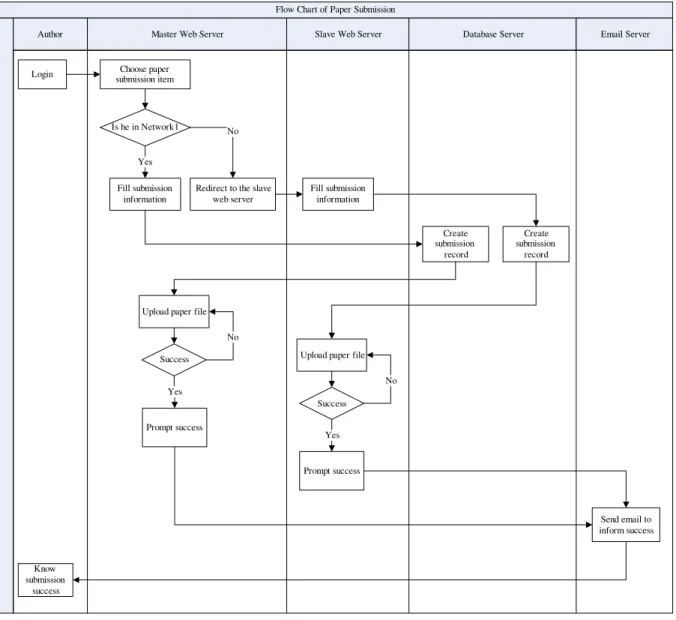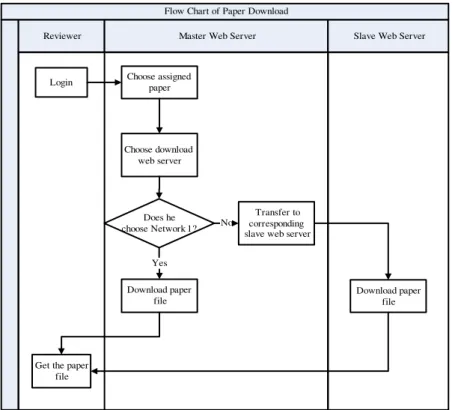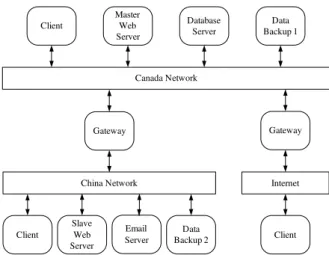Publisher’s version / Version de l'éditeur:
Vous avez des questions? Nous pouvons vous aider. Pour communiquer directement avec un auteur, consultez la première page de la revue dans laquelle son article a été publié afin de trouver ses coordonnées. Si vous n’arrivez pas à les repérer, communiquez avec nous à PublicationsArchive-ArchivesPublications@nrc-cnrc.gc.ca.
Questions? Contact the NRC Publications Archive team at
PublicationsArchive-ArchivesPublications@nrc-cnrc.gc.ca. If you wish to email the authors directly, please see the first page of the publication for their contact information.
https://publications-cnrc.canada.ca/fra/droits
L’accès à ce site Web et l’utilisation de son contenu sont assujettis aux conditions présentées dans le site LISEZ CES CONDITIONS ATTENTIVEMENT AVANT D’UTILISER CE SITE WEB.
12th International Conference on Computer Supported Cooperative Work in
Design (CSCWD 2008) [Proceedings], pp. 5-10, 2008-04-16
READ THESE TERMS AND CONDITIONS CAREFULLY BEFORE USING THIS WEBSITE.
https://nrc-publications.canada.ca/eng/copyright
NRC Publications Archive Record / Notice des Archives des publications du CNRC :
https://nrc-publications.canada.ca/eng/view/object/?id=ac5b7ac8-9265-4d61-8f6c-0396a50f2ff6 https://publications-cnrc.canada.ca/fra/voir/objet/?id=ac5b7ac8-9265-4d61-8f6c-0396a50f2ff6
NRC Publications Archive
Archives des publications du CNRC
This publication could be one of several versions: author’s original, accepted manuscript or the publisher’s version. / La version de cette publication peut être l’une des suivantes : la version prépublication de l’auteur, la version acceptée du manuscrit ou la version de l’éditeur.
Access and use of this website and the material on it are subject to the Terms and Conditions set forth at
Design and implementation of a collaborative conference management
system
http://irc.nrc-cnrc.gc.ca
D e s i g n a n d i m p l e m e n t a t i o n o f a c o l l a b o r a t i v e
c o n f e r e n c e m a n a g e m e n t s y s t e m
N R C C - 5 0 2 8 8
Z h e n g , C . ; S h e n , W . ; Z h e n g , Q . ; T i a n , F .
A version of this document is published in / Une version de ce document se trouve dans: Proceedings of the 12th International Conference on Computer Supported Cooperative Work in Design (CSCWD 2008), Xi’an, P.R. China, April 16-18, 2008, pp. 5-10
The material in this document is covered by the provisions of the Copyright Act, by Canadian laws, policies, regulations and international agreements. Such provisions serve to identify the information source and, in specific instances, to prohibit reproduction of materials without written permission. For more information visit http://laws.justice.gc.ca/en/showtdm/cs/C-42
Les renseignements dans ce document sont protégés par la Loi sur le droit d'auteur, par les lois, les politiques et les règlements du Canada et des accords internationaux. Ces dispositions permettent d'identifier la source de l'information et, dans certains cas, d'interdire la copie de documents sans permission écrite. Pour obtenir de plus amples renseignements : http://lois.justice.gc.ca/fr/showtdm/cs/C-42
Design and Implementation of a Collaborative Conference
Management System
Cheng Zheng
1, Weiming Shen
2, Qinghua Zheng
1, Feng Tian
1 1School of Electronic and Information Engineering, Xi'an Jiaotong University, Xian, P.R. China player035@163.com, qhzheng@mail.xjtu.edu.cn, ftian@sei.xjtu.edu.cn
2
National Research Council, London, Ontario, Canada weiming.shen@nrc.gc.ca
Abstract
In the last few years, several Web-based conference management systems have been developed and used by many international conferences. However, almost all of them were built on stand-alone Web servers. Their fault-tolerance, scalability and ability of responding to dispersed users are limited. Aimed at addressing these problems, this paper presents a collaborative conference management system, whose fault-tolerance, scalability and ability of responding to dispersed users are greatly enhanced by collaboration technologies. A prototype system has been implemented and used to facilitate the management of submissions and paper reviews of the CSCWD2008 conference.
Keywords: Conference Management, Collaboration, Collaborative Conference Management System, Web.
1. Introduction
Traditional conference management depends on manual operations. At some point in the mid 90s, email became a reliable and cost-effective way to send binary file attachments and it opened the possibility of sending papers electronically instead of by “snail” mail [1]. However, when the number of paper submissions increases to some scale, the task of dealing with these submissions manually becomes tedious. This often results in problems such as collecting the wrong author’s information, neglecting some submissions and slowing down the process of conference organization.
In recent years, more and more conferences turned to Web-based conference management systems. Many of these systems have been investigated in [2]. They have implemented such functions as publishing conference information, handling paper submissions and reviews. These functions provide reliability and security and speed up the process of conference organization. However, this kind of Web-based system is deployed on just only one Web server, i.e., a
stand-alone conference management system server in which some deficiencies exist. Firstly, in today’s heterogeneous network environments, the submission of papers or reviews from different networks may encounter different responses. For example, if a conference management system is deployed in the network of Canada, a submission from the China Education and Research Network (CERNET) will be very slow, because the gateways between the two networks restrict the bandwidth based on some specific rules. Secondly, when the number of submissions significantly increases, the stand-alone conference management system server might not accommodate enough bandwidth and concurrent connections for all submissions, i.e., its scalability is limited. Thirdly, the fault-tolerant ability of the stand-alone conference management system server is weak. If the stand-alone server fails, there are no alternative options for users, severely impeding the conference management process.
In order to address these problems, this paper proposes a new concept of collaborative conference management systems. It can be deployed on several servers at different networks and its performance is greatly enhanced by collaboration technologies. We have implemented a prototype system and used it to facilitate the organization of the 12th International Conference on Computer Supported Cooperative Work in Design (CSCWD2008).
The rest of the paper is organized as follows: Section 2 presents the proposed system architecture; Section 3 describes a coordination mechanism for the proposed system; Section 4 presents a prototype system and addresses some of its current problems; Section 5 concludes the paper with some brief discussion on future improvements.
2. Proposed system architecture
Besides achieving the general requirements [2] that a stand-alone conference management system server always does, a collaborative conference management system should include some additional functions as
follows:
1) An author should be allowed to upload his papers to the nearest server according to his location; 2) An author should be allowed to update his papers
to the server to which the papers were uploaded previously;
3) A reviewer should be allowed to download the papers assigned by conference chairs from different servers according to his location;
4) All paper submissions and reviews should be coordinated in a way to guarantee the uniqueness of paper numbers and the currency of updated papers and review reports.
To accommodate these requirements, the servers at different networks must work collaboratively to ensure that few exceptions occur in any procedure.
After considering all these factors, the architecture of a collaborative conference management system is proposed as shown in Figure 1.
Network 1 Network 2 Gateway Master Web Server Email Server Database Server Data Backup 1 Client Client Slave Web Server Data Backup 2
Figure 1. Architecture of a collaborative conference management system
In Figure 1, a master Web server is built up in Network 1 and the major part of the collaborative conference system is located on this master server. This part involves such functions as conference information publication, Web account creation and access management of authors and reviewers, broadcasting and individual e-mailing to Program Committee members, authors, and reviewers, being similar to those of a stand-alone conference management system. In addition, it also provides the function of uploading and updating papers for authors in Network 1 and a way of speeding up the downloading process of papers for reviewers in Network 1. All these additional tasks need the master Web server to work cooperatively with the database server and the email server which are connected to the Network 1.
There is a slave Web server in Network 2 (multiple slave Web servers can be created in the same way). It
is mainly responsible for uploading and updating papers for authors in Network 2, and a way of speeding up downloading papers for reviewers in Network 2. All these tasks need the cooperative work between the master Web server, the slave Web server, the database server and the email server.
In the next section we will provide insight into the coordination mechanism among all these servers.
This architecture has three main advantages: 1) If an author in Network 2 wants to upload his
papers, but the network connection between Network 1 and Network 2 is slow, the author can upload his papers to the slave Web server. This will greatly speed up the process of his uploading.
2) The slave Web server can be responsible for the connections for authors in Network 2. Thus the load of master Web server will be balanced and the scalability of the entire system can be greatly enhanced.
3) If either the master Web server or the slave Web server ever fails to run, the software system behind either server can be transferred to the other one. Then the surviving Web server becomes responsible for the process of the entire conference management.
3. Coordination mechanism
In current distributed systems, there are many coordination mechanisms based on such things as market, rules, game-theory, and the contract-net protocol. In the proposed system, a kind of rule-based coordination mechanism is chosen. The following subsection provides some detailed explanations of how the collaborative conference management system in Figure 1 works according to different event types: process control, data backing up and failure handling among distributed servers.
3.1. Process control
The focus of process control at the moment is when an author submits his papers or when a reviewer downloads his assigned papers. Figure 2 and Figure 3 describe the flow of both scenarios respectively.
As shown in Figure 2, when an author wants to submit a paper, he needs to access the master Web server first to login to the system. Then the system does as follows:
1) The master Web server checks the information of the author to find out whether he is an author in Network 1. If so, the master Web server will serve him according to the next steps. Otherwise, it will redirect the author to the slave Web server which will serve him
according to the next steps.
2) The system prompts the author to fill in the required information regarding the submission. Then a submission record is created in the conference database located in the master Web server.
3) The system prompts the author to upload the paper. After it is uploaded successfully, the master Web server will inform the author by both responding with an html page and sending an email.
As shown in Figure 3, when a reviewer wants to download papers, he needs to access the master Web server first. Then the Web server will provide a list of Web server links including the master Web server and the slave Web server to let the reviewer choose one. Then the master Web server will redirect the reviewer to the chosen Web server which will prompt the
reviewer to download the papers.
Flow Chart of Paper Submission
Author Master Web Server
Yes
Slave Web Server Database Server Email Server
No No No Yes Yes Login Fill submission information Is he in Network 1
Redirect to the slave web server Fill submission information Create submission record Create submission record
Upload paper file
Send email to inform success Success
Prompt success Upload paper file
Success Prompt success Know submission success Choose paper submission item
Figure 2. Flow chart of paper submission
Besides the above two scenarios, updating a paper on its previously uploaded Web server also needs collaborative work among corresponding servers. This can be achieved in a way that is similar to when an author uploads his papers. The only difference is that when the author wants to update a paper, he/she should have access to the master Web server first, and then the master server will redirect the author to the server that the paper uploaded to previously. The illustration of this scenario is shown in Figure 4.
From the view of authors and reviewers, the processes of all above scenarios seems to happen only on the master Web server, i.e., the collaborative work among corresponding servers would be transparent to them.
Flow Chart of Paper Download
Reviewer Master Web Server
Login Choose assigned paper
Slave Web Server
Get the paper file Does he choose Network 1? Choose download web server Transfer to corresponding slave web server
Download paper file Yes No Download paper file
Figure 3. Flow chart of paper downloading
Flow Chart of Paper Update
Author Master Web Server
Yes
Slave Web Server Database Server Email Server
No No No Yes Yes Login Update submission information Is the paper uploaded in this server
previously Redirect to corresponding slave web server Update submission information Update submission record Update submission record
Update paper file
Send email to inform success Success
Prompt success Update paper file
Success Prompt success Know update success Choose paper update item
3.2. Data backup
In a conference management system, there are two kinds of data: one is stored in the database, i.e., the database records; the other one is stored in the Web server, i.e., the uploaded paper files. We should guarantee that all these data are backed up..
In the collaborative conference management system, we use a distributed backup strategy. In Network 1, the database records and the uploaded files are backed up daily onto a computer called Data Backup 1. In Network 2, the uploaded files are backed up daily onto a computer called Data Backup 2. When either or both of the sub systems in each system corrupt, we can use the data backup to recover them.
3.3. Failure handling
When the collaborative conference system runs, the slave Web server might fail at times. At the moment, the system administrator needs to transfer the sub system of the slave Web server to the master Web server and redirect users in Network 2 to the master Web server.
In a critical case, once the master Web server fails, the system administrator must upgrade the slave Web server to the master Web server and transfer the major part of the system to it. DNS mechanism can be utilized to make the process transparent to the users in Network 1.
4. Prototype system
According to the proposed system architecture and coordination mechanism discussed in the last two sections, we developed a prototype system of a collaborative conference management system and used it for the organization of the CSCWD2008 conference.
4.1. Prototype system architecture
Considering the practical circumstances, we adjusted the architecture in Figure 5. According to previous experience, the participants of the conference were usually divided into two parts: the participants from China and those from other countries. Since the number of participants from one country, except China, was small, we did not have to build up one Web server for each country. Having considered practical situations, we decided to build two Web servers: one in China, which is responsible for processing paper submissions from China, and the other one in Canada, which is responsible for processing paper submissions from other countries. For some specific reasons, the email server which we used for the email service of the conference is in China, while the master Web
server is in deployed in Canada.
The Web server system has been implemented on Apache Tomcat 5.0 and the database server system is MySQL Community Server.
4.2. Remaining problems
The system began running in early October 2007. Until the time of writing this paper, it had met two main problems:
1) Gateway restriction: Since the email server is located in China and the master Web server in Canada cannot directly access the email server using SMTP protocol (it seems that the gateway forbids this function), the functions of emailing from the master Web server cannot work at the beginning. To solve this problem, when the master Web server needs to send an email, we let it send the content of the email to the slave Web server using HTTP protocol. Then the slave Web server will send the email instead of the master Web server. 2) Power off: The power of the slave Web server
was cut off at times. When this happens, we change some configurations of the sub-system on the master Web server , thereby the authors in China submit their papers to the master Web server. Canada Network Master Web Server Database Server Data Backup 1 Client China Network Gateway Client Slave Web Server Data Backup 2 Email Server Gateway Internet Client
Figure 5. The architecture of the prototype system
5. Conclusion
Almost all existing conference management systems are based on stand-alone Web servers. Thus they have some shortcomings such as weak fault-tolerance, low scalability and slow response for dispersed users. In order to enhance the ability of conference management systems, this paper proposes an architecture for collaborative conference management systems. It improves the speed of paper
uploading and downloading. In addition, the scalability and fault-tolerance of conference management systems are greatly enhanced by collaboration technologies. The collaborative conference management system has proved to be suitable for large global academic conferences.
A prototype system has been developed and successfully applied to the organization of the 12th International Conference on Computer Supported Cooperative Work in Design (CSCWD2008) with about 360 submissions and 800 reviews. However, there is a lot of room for improvement, particularly on system reliability, failure handling, and user interfaces. Significant effort is required for its extension to multiple slave servers.
References
[1] A. Malinowski and B. Wilamowski, “Paper Collection and Evaluation through the Internet”, Proceedings of the 27th
Annual Conference of the IEEE Industrial Electronics Society, Denver, CO, Nov. 29 - Dec. 2, 2001, pp. 1868-1873.
[2] R. Snodgrass, “Summary of Conference Management Software.” http://www.acm.org/sigs/sgb/summary.html
[3] K. Akagi and T. Furukawa, “Feasibility Implementation of Paper Submission and Publication Support System over the Internet”, Proceedings of SICE Annual Conference, Fukui, Japan, August 4-6, 2003, pp. 1681-1686
[4] Z. Gu, X. Jin and B. Desai, “CONFSYS: The CINDI Conference Support System”, Proceedings of the Seventh
International Database Engineering and Applications Symposium, Hong Kong, 16-18 July 2003, pp. 414- 418.
[5] G. Coulouris, J. Dollimore and T. Kindberg, Distributed
Systems: Concepts and Design, Fourth Edition, China



